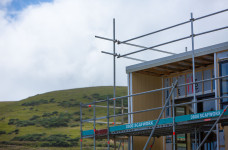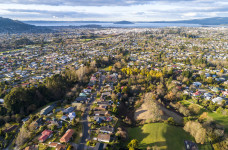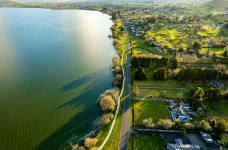Publication
Urban Development Act
The Urban Development Act (the Act), alongside the Kāinga Ora – Home and Communities Act, creates a framework for transformational urban development that contributes to sustainable, inclusive and thriving communities.
Addressing urban challenges
New Zealand’s urban areas are growing, but experiencing challenges such as unaffordable housing, high urban land prices, increasing greenhouse gas emissions, lack of transport choice, increasing numbers of people experiencing homelessness and pressure on the public housing register.
The Act aims to address these challenges by providing a new way of approaching complex urban development projects.
Read the Urban Development Act 2020(external link)
Read the Kāinga Ora – Homes and Communities Act(external link)
Specified Development Projects
The Act establishes the Specified Development Project (SDP) process, a new way of planning and funding complex or challenging urban development projects. SDPs are the kind of projects that have historically struggled to go ahead because of barriers such as uncoordinated decision-making processes, poor and aging infrastructure or restrictive planning.
SDPs are designed to deliver better urban development outcomes, such as a mix of housing types to reflect the diverse needs of individuals and whānau, good transport connections and access to jobs and business opportunities, community facilities and green spaces.
The Act sets out a process that has to be completed before a SDP can begin, meaning projects can be shaped by local needs and aspirations, and the benefits of urban development are balanced against environmental, cultural and heritage considerations.
Key features of the SDP process are early engagement with Māori and other stakeholders and full public consultation on development plans.
You can read more about SDPs, including how to submit an SDP proposal and how proposals are assessed on the Kāinga Ora - Homes and Communities (Kāinga Ora) website.
Specified Development Project: Kāinga Ora – Homes and Communities (kaingaora.govt.nz)(external link)
Powers available to Kāinga Ora under the Act
Once an SDP is established, the Act gives Kāinga Ora access to a toolkit of development powers that it can use when carrying out SDPs, including:
- the ability to modify, add to, or suspend provisions in the Resource Management Act (RMA), regional or district plans or policy statements within the project area
- the power for Kāinga Ora to act as a resource consent authority and requiring authority under the RMA
- the ability to create, reconfigure and reclassify reserves
- the ability to build, change, and move infrastructure
- tools to fund infrastructure and development activities, including the ability to levy targeted rates.
None of the powers can be used in respect of Māori customary land, Māori reserves and reservations, or any parts of the common marine and coastal area in which customary marine title or protected customary rights have been recognised.
Land acquisition powers
Under the Act, Kāinga Ora also has land acquisition powers when its undertaking urban development, including SDPs. This means Kāinga Ora can bring together different parcels of land to help support urban development and supports them to undertake smaller-scale developments that are not SDPs development projects. Kāinga Ora can also acquire land for future development areas before a project is announced and land values rise. For example, this could include acquiring land along a transport corridor before the route is made public.
There are several safeguards that have been built into the Act to make sure the land acquisition powers are used appropriately. In particular, the Act recognises that land is a taonga for Māori and must be protected. Protections for land in which Māori have interests have been built into the land acquisition provisions.
See a summary of the powers available to Kāinga Ora under the Act. (PDF, 738 KB)
Partnering with Māori and protecting Māori interests
The Act sets out a strong expectation that Māori aspirations are identified and supported in urban development, including throughout the SDP process. The SDP process puts Māori at the heart of projects, enabling them to be active participants - as initiators, leaders, partners, and shapers - to ensure that the best outcomes for Māori are delivered.
The Act includes protections for land in which Māori have an interest, including land received as redress or by the exercise of rights under Treaty Settlements. The Act maintains and supplements existing protections and provides protections for types of Māori land not previously protected in law.
The Urban Development Act must be read subject to anything in a Treaty settlement Act or deed, Te Ture Whenua Māori Act 1993, and the Marine and Coastal Area (Takutai Moana) Act 2011. This ensures that the Crown meets its obligations.



